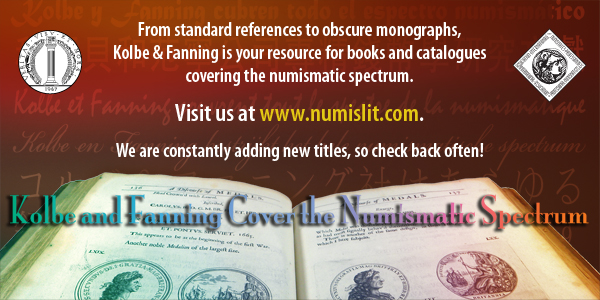
PREV ARTICLE
NEXT ARTICLE
FULL ISSUE
PREV FULL ISSUE
BLESSED ARE THOU, BIBLIOGRAPHY
Dick Johnson submitted these thoughts on the value of bibliographies. It was inspired by a cartoon! Thanks.
-Editor

I appraised a fairly rare medallic item this week for the owner and ended up writing a 15-page document. My appraised value was under $1,000; as such it did not deserve such a lengthy dissertation. But I got carried away. I could not find any recent auction sales of this item or similar items by the same artist. So I increased my effort. I overcompensated by digging deeper, finding dozens of published references. The deeper I dug, however, the more interesting became the story about the item, the portrait subject, the artist, how it was made and who made it. I learned of two collectors who had this item in their collections, and five public museums. The Smithsonian Numismatic Collection and the American Numismatic Society both had the item in their collections. The others were specialized museums. It was not diestruck, but was an electrogalvanic cast (a “galvano” made by one of the founders of Medallic Art Company, this strengthened my research resolve). I attached a list of the 24 published works I located with related data on the item and its artist. I didn’t call it a “bibliography.” Now it is éclat to call it “Resources.” Call it what you wish I hope the client tracks down some of these published citations. This will give him as much reading pleasure, I’m certain, as I have enjoyed, uncovering them. But it brings to mind the importance what has been previously published about a subject – any subject. The first thing a writer should do when approaching a fresh writing chore is DO A LITERATURE SEARCH. There are numerous aids for book search and subject search these days. I rely on my own library and my own voluminous files first. Then I turn to ABEBOOKS, the library catalogs of the two numismatic organizations, American Numismatic Association, ANS, then GOOGLE, then …[think for yourself, where would you look?] When I have tracked every lead, checked out every bibliography in those books I turn to live people. I start asking myself who has special knowledge of this subject or this numismatic item. It’s called ASK THE EXPERT. I find dealers often have extensive specialized knowledge. A brief inquiry often brings the most enlightening response. Dealers – if they have the spare time – delight in showing off how much specialized knowledge they do indeed possess. But don’t be a pest. Don’t come back with twenty questions. Dig into the literature. If you wish, send that dealer a summary of what you have learned later and ask if you have overlooked anything. And don’t overlook adding a list of books, articles, manuscripts, internet references, everything related to the subject you wrote about, in your own writings. Be sure to add a Bibliography, Dude!

Wayne Homren, Editor The Numismatic Bibliomania Society is a non-profit organization promoting numismatic literature. See our web site at coinbooks.org. To submit items for publication in The E-Sylum, write to the Editor at this address: whomren@gmail.com To subscribe go to: https://my.binhost.com/lists/listinfo/esylum All Rights Reserved. NBS Home Page Contact the NBS webmaster 
|